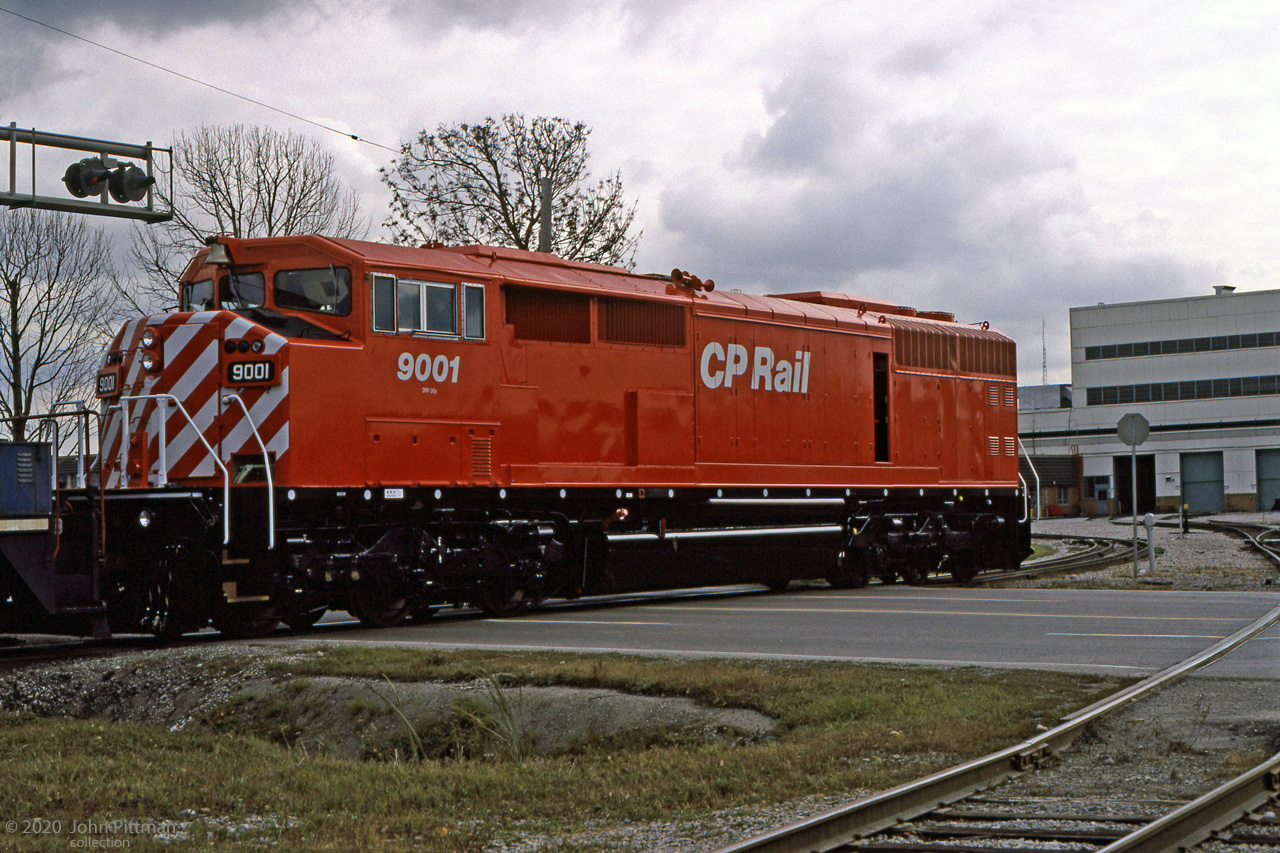|
Caption: Inspired by recent pictures of CM&Q SD40-2F in Ontario, here is one that goes back to their first weeks.
Gord Taylor caught 2nd unit CP 9001 crossing Oxford Street East just outside the north end of the GMDD plant.
It appears to me that the engine ahead is a GMDD plant switcher, moving CP 9001 around the plant pre-delivery.
CP 9000 and 9001 were added to the CP roster 3 weeks after this picture.
This batch of 25 SD40-2F could have lead to more orders, if they had been as satisfactory as CP's SD40-2 fleet.
However there were serious initial defects, especially with the EMD 645 diesel engines, so that all SD40-2F's had to be returned and reworked after delivery.
The cowl body configuration also tended to be unpopular with operating crews.
|



For more information about SD40-2F initial defects, I recommend the caption and comments of this one: http://www.railpictures.ca/?attachment_id=40833
What does the ‘F’ refer to? Thanks for the ‘historical’ pic.
@ Brad. I think the F designation was for full width or cowl EMD’s? F/FP45′s,F40, F40PH, SDP40F, etc.
@ngineered4u makes sense. Thanks for clarifying.
@Brand..always happy to help
Oops Brad
@ngineered4u i’m used to rebranding. Ha. Thanks again.
Another answer to Brad’s question, though I agree with what ngineered4u wrote.
The “F” applied to EMD/GMD full-width cowl body locos harks back to their classic “F” unit series: FT, F3, F7, and F9. Usual explanation for FT and subsequent was “fourteen” (hundred horsepower per loco). FT was actually 1350 HP, F3 and F7 were 1500 HP, F9 has 1750 HP.
An important difference of the original F-unit series was that their structural strength came from full height bridge-style trusses (just inside their sheet metal sides), instead of having a strong underframe.
Is the lettering off between the C and P? Looks like it.
I represented the United Transportation Union (the bargaining unit for Conductors, Trainmen & Yardmen back in the day) in the design phase of these units. We gave input into the Conductor’s work station on the unit, despite at the time holding the bargaining unit’s position that cabooses would not be eliminated. I was also there when senior Mechanical Dept officials from CP opted for the “triclops’ window design. Personally, I preferred this cab design to conventional SD40-2s, because they offered better collision protection & a better desk for doing paperwork etc. Unfortunately the original seats in the cab were back breakers, really uncomfortable.